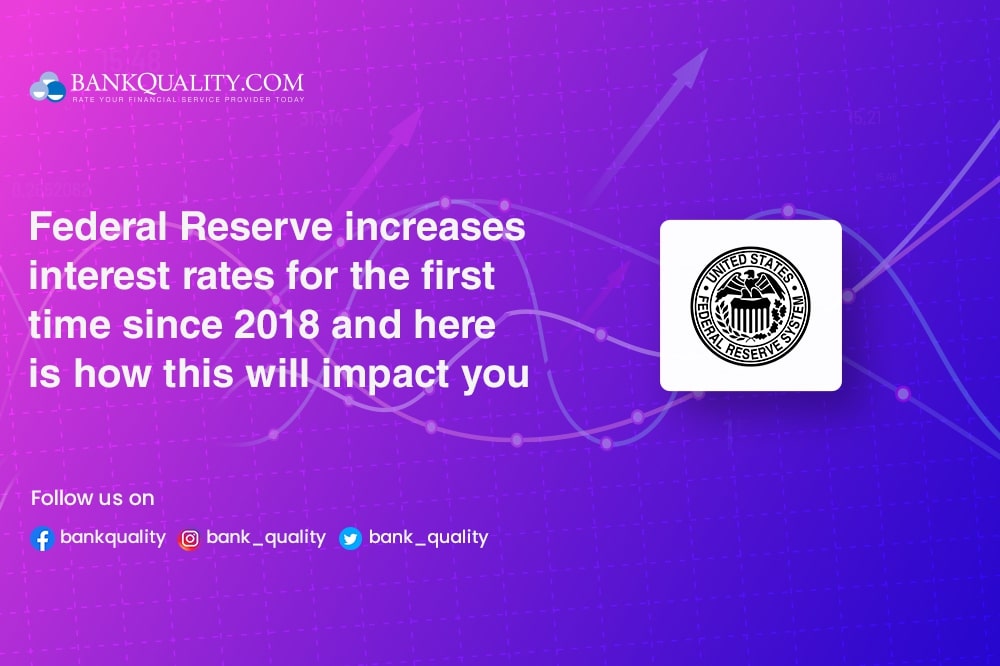
The Federal Reserve has approved its first interest rate increase for the first time since 2018, as a measure to address the struggles of soaring US inflation, due to the impacts of the Russia-Ukraine war and the coronavirus crisis.
The Federal Reserve (Fed) has raised rates by a quarter percentage point for the first time since 2018 which was anchored near zero. This move comes in, as the central bank of the United States struggles with high inflation and wants to address it without creating a major impact on the economic growth.
The rate rise was approved by only one difference of opinion. James Brian Bullard, president of the Federal Reserve Bank of St. Louis wanted a 50 basis point increase. This increase is expected to be the first in a series of raises in the coming months and on average Fed policymakers said that the interest rates are expected to climb to 1.9% by the end of this year.
The Federal Open Market Committee said, “it anticipates that ongoing increases in the target range will be appropriate.” Fed’s balance sheet reached nearly $9 trillion, made up mainly of treasuries and mortgage-backed securities it has purchased over the years. “In addition, the Committee expects to begin reducing its holdings of Treasury securities and agency debt and mortgage-backed securities at a coming meeting.”
Jerome Powell, chairman of the Fed said, “We are attentive to the risks of further upward pressure on inflation and its expectations”.“The committee is determined to take the measures necessary to restore price stability. The U.S. economy is very strong and well-positioned to handle tighter monetary policy,” Powell said.
The Fed has a dual mandate as it plans to maximise employment and keep prices under control. The employment and job market recovered from the lows of the pandemic, which was made possible by Fed rate cuts and a massive stimulus programme.
Fed is trying to balance the economy
The central bank is also suffering, as it tries to reduce spending with just enough margins to bring the prices under control and prevent a recession. This balancing act became a tough task after Russia’s invasion of Ukraine, which triggered a sharp increase in the prices of gasoline and grain.
The Fed said, “The invasion of Ukraine by Russia is causing tremendous human and economic hardship. The implications for the U.S. economy are highly uncertain, but in the near term the invasion and related events are likely to create additional upward pressure on inflation and weigh on economic activity”.
The impact of interest rates on consumers
The federal funds rate that is set by the central bank is utilised by the banks to charge one another for overnight loans. However, this is not the rate that the consumers pay but it is still affecting the borrowing and savings rates.
Higher interest rates hold a possibility of increasing borrowing costs for consumers who are planning to buy homes and cars. These increased costs could help to cool inflation by lowering consumer demand.
The mortgage rates have started rising and are likely to increase further as the Fed is pushing short-term borrowing costs. The average rate for a 30-year fixed-rate mortgage rose to 4.27% in the week ending March 11, up roughly a full percentage point from a year earlier, and the highest level since May 2019, according to the Mortgage Bankers Association. This will increase home-buying costs that will make it more difficult for aspiring home buyers to afford.